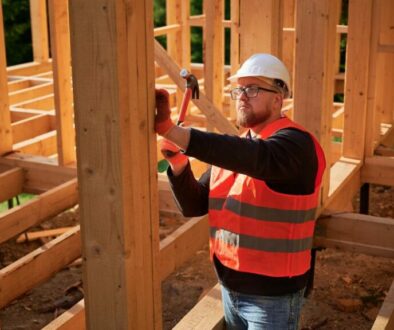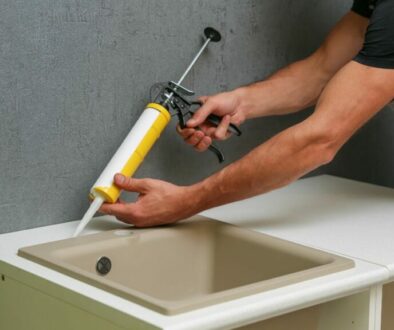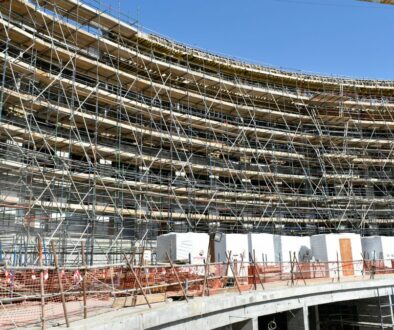What Are Plasma Cutting Skills?
Plasma cutting is a manufacturing technique that involves cutting various metals using a plasma torch. The process involves passing an electric arc through a gas, which then becomes ionized plasma. The plasma is highly focused and can reach temperatures of up to 30,000 degrees Fahrenheit. This extreme heat allows the plasma torch to cut through metal easily.
Plasma Cutting Skills Examples
Plasma cutting is a highly skilled trade that requires a great deal of precision and attention to detail. Those who excel at plasma cutting are able to operate plasma cutting machines while maintaining a safe work environment, selecting the appropriate gases, adjusting machine settings, and troubleshooting issues on the fly.
One of the most important skills needed for successful plasma cutting is the ability to read technical drawings. Without a strong understanding of technical drawings, it can be difficult to determine the best way to approach a project and ensure that it is completed accurately and efficiently.
Another crucial skill for plasma cutting is the ability to adjust machine settings to match the material being cut. Different materials require different settings in order to be cut effectively, and those who are skilled at plasma cutting are able to quickly and accurately adjust these settings as needed.
In addition to technical skills, those who excel at plasma cutting also possess a strong understanding of metallurgy. This knowledge is essential in order to ensure that the best results are achieved when cutting different types of metals.
Another important skill needed for plasma cutting involves selecting the correct gases for the materials being cut. Different gases can affect the quality of a particular cut or alter the appearance of the finished product. Those who are skilled at plasma cutting have a deep understanding of the properties of different gases and are able to select the best gas for each project.
Plasma cutters are also equipped with different nozzles, and choosing the right nozzle for the job can be the difference between a smooth cut and a jagged one. Those who are skilled at plasma cutting are able to quickly and accurately select the best nozzle for each project, ensuring that the final product is of the highest quality.
Overall, plasma cutting is a highly skilled trade that requires a great deal of knowledge and expertise. Those who excel at plasma cutting possess a wide range of skills, including the ability to read technical drawings, adjust machine settings to match the material being cut, and possess a strong understanding of metallurgy and gas properties. With these skills, plasma cutters are able to produce high-quality products that meet the needs of their clients.
How Do You Improve Plasma Cutting Skills?
Improving plasma cutting skills requires a combination of training, practice, and hands-on experience. First, it is important to be trained in the use of plasma cutting equipment and the different techniques that are involved. Plasma cutting courses and workshops can help provide this knowledge and provide opportunities for students to practice under the guidance of experts.
One important aspect of plasma cutting is understanding the different types of gas that can be used with the equipment. Argon, hydrogen, and nitrogen are all commonly used, but each has its own unique properties that can affect the quality of the cut. For example, nitrogen is often used for cutting thicker materials because it produces a narrower kerf, or cut width, than other gases.
Another key factor in plasma cutting is understanding the different types of nozzles that can be used. Nozzles control the flow of gas and the shape of the plasma arc, which in turn affects the quality of the cut. Different nozzles are used for different materials and thicknesses, so it is important to choose the right one for the job.
Getting hands-on experience is also crucial for improving plasma cutting skills. Apprenticeships and internships can provide an opportunity to work under experienced plasma cutters and learn by observation. By watching others at work and being given the opportunity to try different techniques, apprentices and interns can learn the subtleties of plasma cutting that are not easily learned from a textbook.
It is also important for plasma cutters to be familiar with the materials they are cutting. Understanding the properties of different metals and alloys can help cutters make better decisions about the type of equipment and techniques to use for a particular job. For example, stainless steel requires a different approach than aluminum, and each type of material may require a different gas and nozzle combination.
Finally, practice is key to improving plasma cutting skills. The more experience that a cutter gets, the more proficient they become. The ability to maintain a steady hand, adjust equipment quickly, and remain calm under pressure are all skills that take time to develop. Yet, with practice and experience, any new cutter can become a skilled plasma cutter.
Why Do Employers Look For Plasma Cutting Skills?
Plasma cutting is a highly specialized skill that involves using a plasma torch to cut through metal. This process is widely used in various industries that require precision cutting of metal, such as construction, automotive, and manufacturing.
One of the main reasons why employers look for plasma cutting skills is the high demand for skilled plasma cutters in the job market. Many industries rely on plasma cutting to create intricate designs and shapes from metal sheets. As a result, skilled plasma cutters are in high demand and can earn a good living.
Moreover, acquiring plasma cutting skills can open up new job opportunities for employees. With the increasing demand for plasma cutting services, many businesses are looking for skilled plasma cutters to join their team. This means that employees who possess plasma cutting skills can explore various job opportunities in different industries.
Aside from the financial benefits, possessing plasma cutting skills can also lead to personal career growth. Experienced plasma cutters are often promoted to supervisory or managerial positions, where they oversee the operations of a plasma cutting workshop. The management of a plasma cutting workshop requires highly skilled professionals to ensure the efficient and safe operation of equipment and personnel. With experience and additional training in supervisory or management skills, a plasma cutter can become a workshop manager and direct a team of skilled plasma cutters.
However, acquiring plasma cutting skills requires a combination of training, practice, and hands-on experience. It is not an easy skill to master, and it takes time and dedication to become proficient. Additionally, plasma cutting can be dangerous if not done correctly, so it is essential to receive proper training and follow safety protocols.
Plasma cutting skills are critical for the efficient and safe operation of plasma cutting equipment. These skills require a combination of training, practice, and hands-on experience. With the demand for plasma cutters increasing, improving your plasma cutting skills can be the key to new job opportunities and personal career growth.




